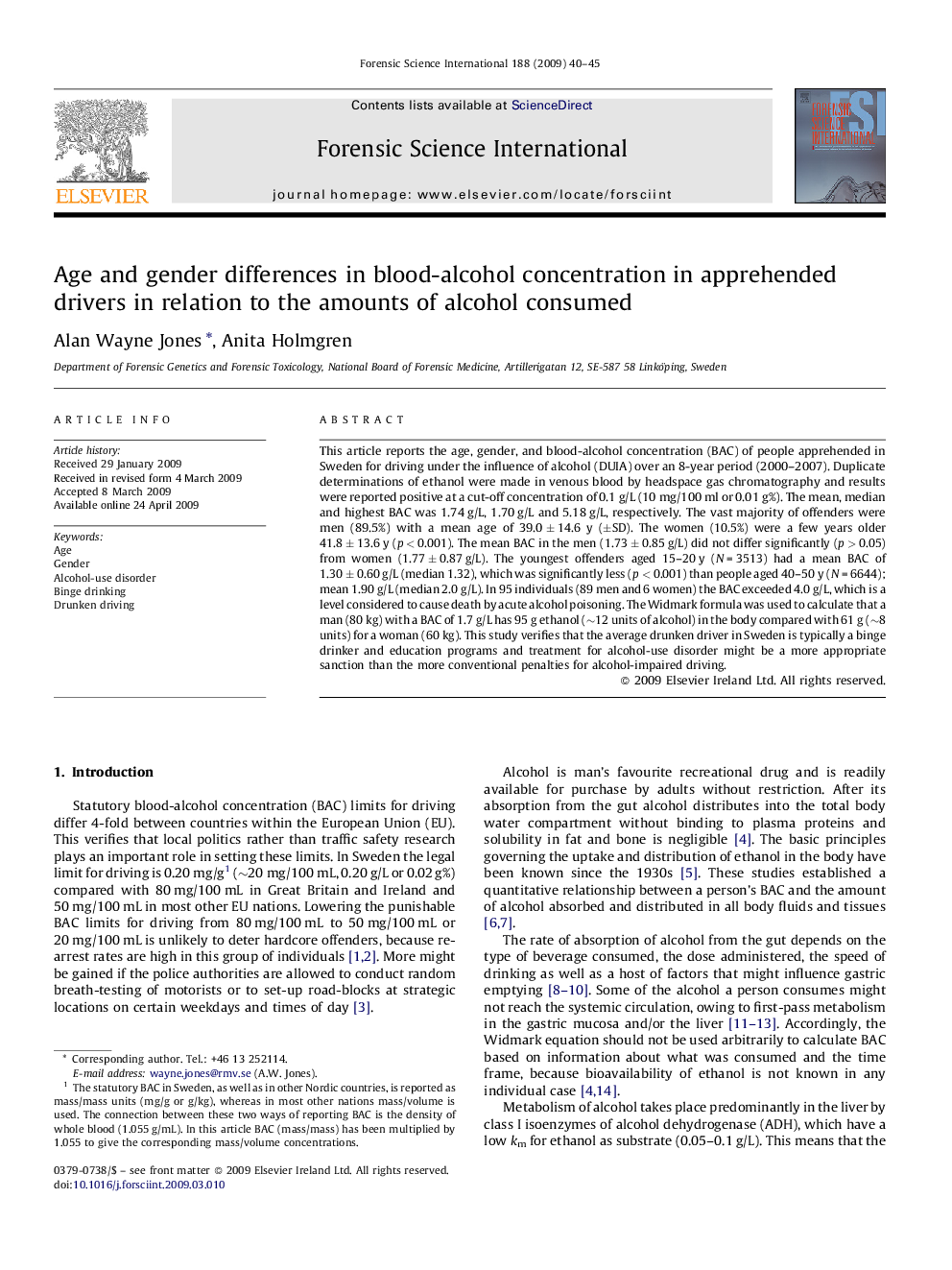| Article ID | Journal | Published Year | Pages | File Type |
|---|---|---|---|---|
| 97375 | Forensic Science International | 2009 | 6 Pages |
This article reports the age, gender, and blood-alcohol concentration (BAC) of people apprehended in Sweden for driving under the influence of alcohol (DUIA) over an 8-year period (2000–2007). Duplicate determinations of ethanol were made in venous blood by headspace gas chromatography and results were reported positive at a cut-off concentration of 0.1 g/L (10 mg/100 ml or 0.01 g%). The mean, median and highest BAC was 1.74 g/L, 1.70 g/L and 5.18 g/L, respectively. The vast majority of offenders were men (89.5%) with a mean age of 39.0 ± 14.6 y (±SD). The women (10.5%) were a few years older 41.8 ± 13.6 y (p < 0.001). The mean BAC in the men (1.73 ± 0.85 g/L) did not differ significantly (p > 0.05) from women (1.77 ± 0.87 g/L). The youngest offenders aged 15–20 y (N = 3513) had a mean BAC of 1.30 ± 0.60 g/L (median 1.32), which was significantly less (p < 0.001) than people aged 40–50 y (N = 6644); mean 1.90 g/L (median 2.0 g/L). In 95 individuals (89 men and 6 women) the BAC exceeded 4.0 g/L, which is a level considered to cause death by acute alcohol poisoning. The Widmark formula was used to calculate that a man (80 kg) with a BAC of 1.7 g/L has 95 g ethanol (∼12 units of alcohol) in the body compared with 61 g (∼8 units) for a woman (60 kg). This study verifies that the average drunken driver in Sweden is typically a binge drinker and education programs and treatment for alcohol-use disorder might be a more appropriate sanction than the more conventional penalties for alcohol-impaired driving.
